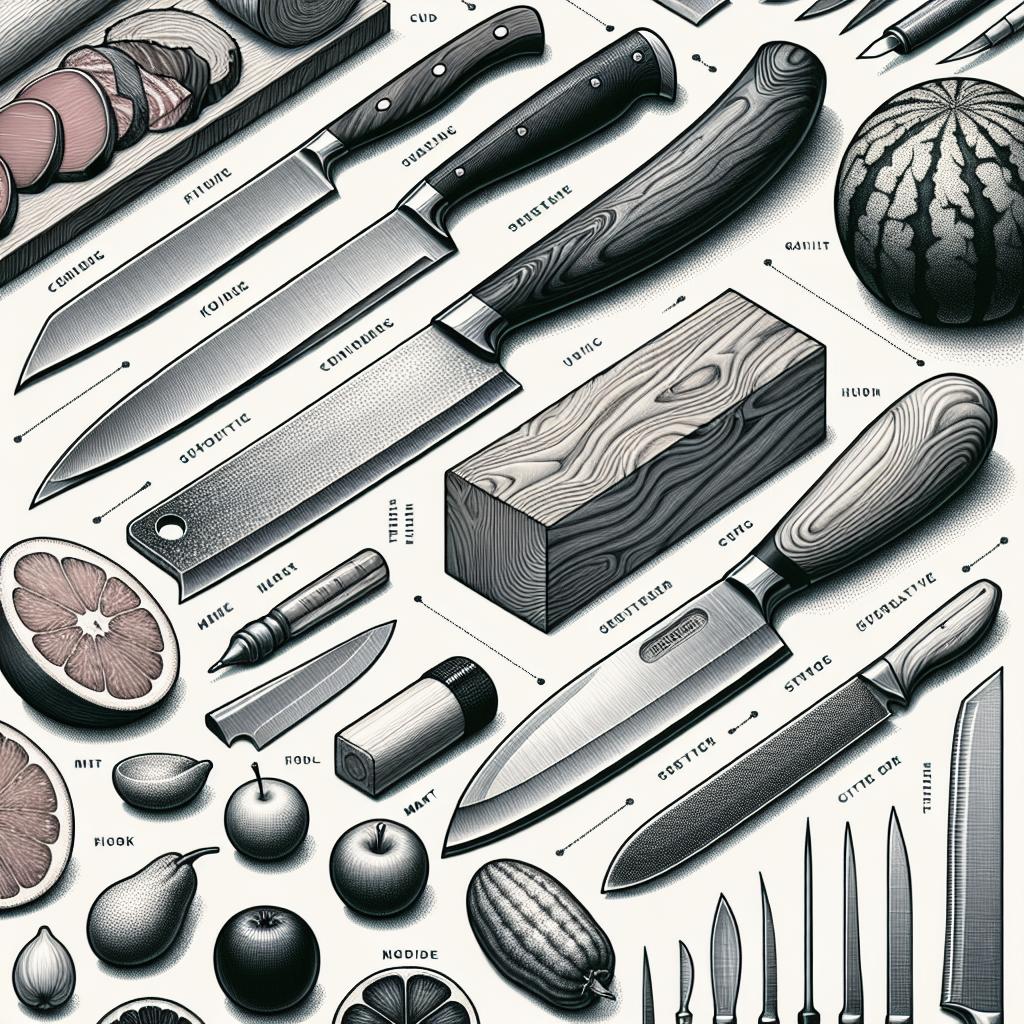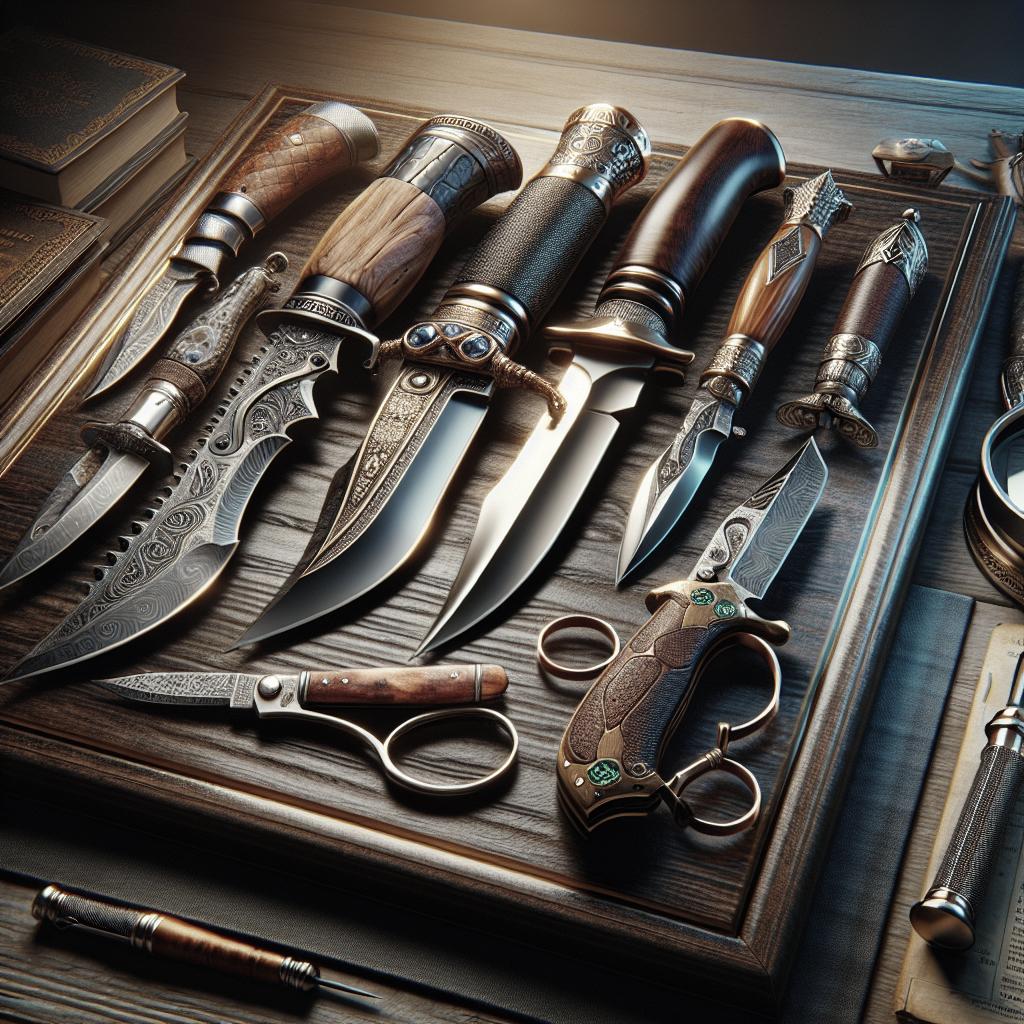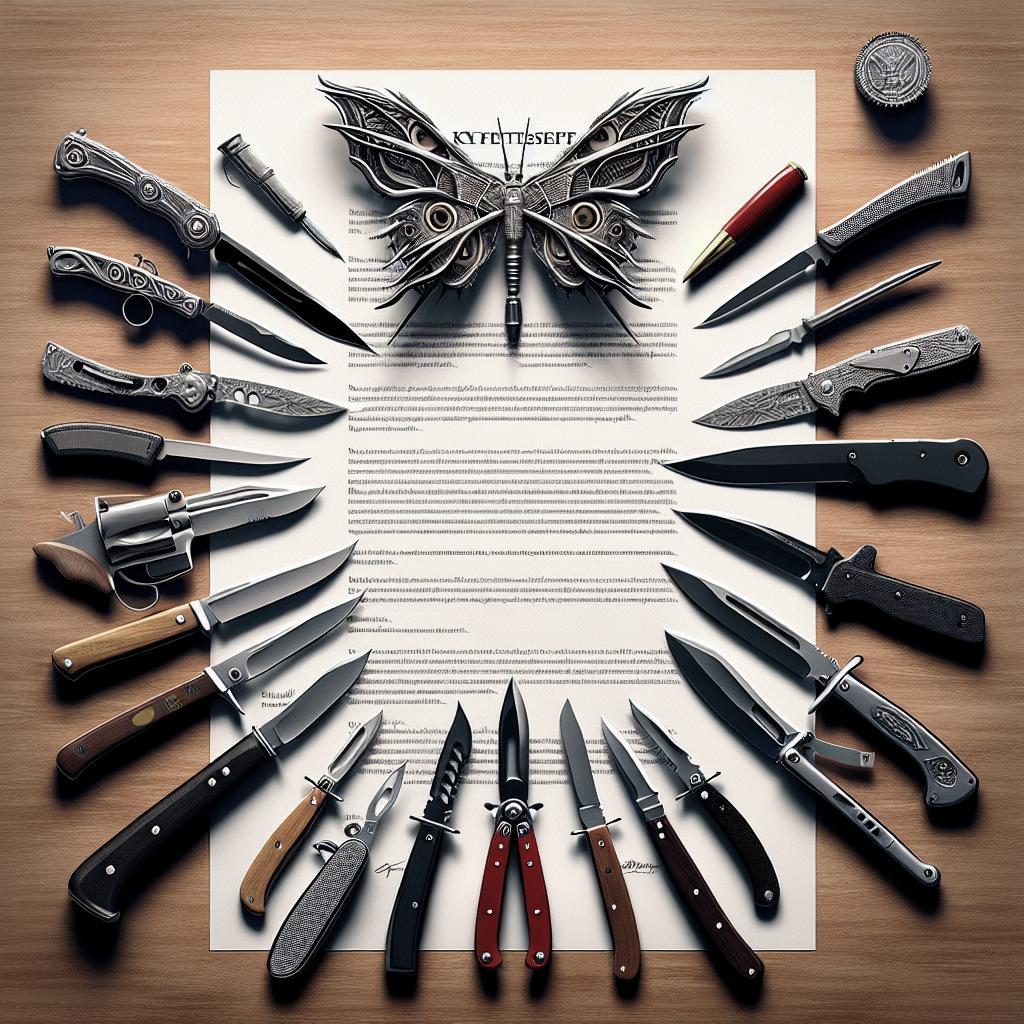Understanding Knife Edge Types and Their Uses
With an array of blade options available, choosing the right knife can be overwhelming. Understanding the various knife edge types and their applications is crucial, whether you’re a chef, a craftsman, or an outdoor enthusiast. In this comprehensive guide, we will explore the anatomy of the knife edge, delve into different knife edges like straight, serrated, and others, and examine specialty edges such as the convex and tanto edges. Furthermore, we will discuss sharpening strategies tailored to each edge type and offer tips on maintaining sharpness, enhancing both safety and effectiveness. This exploration will equip you with the knowledge to select and care for knives tailored to your specific needs, optimizing performance and longevity.
The Anatomy of a Knife Edge
Understanding the anatomy of a knife edge is fundamental before diving into different edge styles. The knife edge determines how a knife performs and affects its precision and usability. Typically, a knife edge consists of the blade which tapers to form a sharp point or line that performs the cutting.
Key elements of a knife include the edge angle, bevel, and grind. The edge angle is the angle at which the blade material meets, impacting sharpness and durability. The bevel is the shape formed by grinding, and final sharpening determines the performance. Grinds like flat, hollow, or convex dictate strength and application types. Recognizing these components aids in selecting the right knife and optimal sharpening techniques.
Kinds of Knife Edges
Straight vs. Serrated vs. Combination Edges
Straight edges are ubiquitous and favored for their versatility and precision. Ideal for slicing and chopping, the even surface allows smooth cuts through various materials. Their simplicity means they are straightforward to sharpen, ensuring peak condition effortlessly.
Serrated edges excel in sawing through tough surfaces like bread, tomatoes, and rope. The saw-like teeth provide punctured contact points, preventing slippage on slippery surfaces. Meanwhile, combination edges offer blended benefits, featuring partial serrations alongside straight edges, catering to diverse cutting needs, especially in outdoor or survival contexts.
Common Knife Edge Grinds
Knife edge grinds are diverse, each offering specific advantages. The Convex Grind, for instance, features a rounded bevel that strengthens the edge, making it ideal for tasks demanding sustained use like chopping wood, as it maintains sharpness longer.
Meanwhile, a Hollow Grind offers a thin, sharp edge suitable for precise cutting tasks. It enhances slicing ability but may not withstand pummeling work due to its fragile nature. The Flat Grind provides a balance, maintaining a robust edge capable of varied cutting tasks.
Convex Grind
A Convex Grind is renowned for its strength and durability. The blade curves outward, distributing force across the cutting edge, preventing chipping or edge damage, which is common in impact-rich environments. Popular among bushcrafters and outdoor enthusiasts, it’s perfect for tasks like splitting and carving.
Although sharpening a convex edge requires a bit of expertise – typically using sandpaper or a slack belt grinder – its longevity reduces frequency of maintenance. This grind effectively handles more pressure than its peers, thereby lessening regular maintenance cycles.
Hollow Grind
Hollow Grind edges are designed with precision in mind. They boast a concave bevel, sharpening to a thin point perfect for fine, delicate slicing. Often seen in kitchen knives and straight razors, it offers excellent sharpness with minimal push force.
However, the edge’s thinness makes it vulnerable to wear and chips under heavy use. Consequently, it is crucial to maintain these knives and ensure they’re reserved for tasks within their durability range, maximizing presence with strategic care.
Flat Grind
The Flat Grind is a popular choice for its balanced attributes between sharpness and durability. It forms an equal angle across the blade, resulting in a robust yet sharp edge ideal for various tasks, from kitchen prep to woodworking.
Simplicity in sharpening is its charm, easily accommodated with a standard whetstone. Widely used across culinary tools, pocket knives, and bushcraft equipment, a flat grind knife is as much a staple in professional as it is in domestic settings.
Chisel Grind
A Chisel Grind is characterized by having one side of the blade flat and the other with the grind. This design provides a razor-sharp edge with unparalleled cutting power, popular in tools like chisels and knives used for precise slicing, such as sushi knives.
One-sided sharpening enables quick edge maintenance but also means the knife tends to veer towards the flat side unless expertly handled. Its design serves a niche, catering to specialized cutting needs requiring exactitude and delicacy.
Double Bevel (V-Grind)
The Double Bevel, or V-Grind, is the most common grind featuring symmetrical angles on both sides, forming a “V” shape. It balances ease of sharpening and edge stability, offering excellent performance in various conditions by maintaining uniformity in edge retention.
It’s favored in chef’s knives and everyday carry tools for its straightforward design. These edges are easily sharpened, performing reliably whether cutting tough meats or slicing vegetables, making them an excellent all-rounder for users of all skill levels.
Specialty Edges and Their Applications
Convex Edge
A Convex Edge is designed for improved durability and edge retention. Its rounded bevel protrudes slightly, allowing it to distribute pressure more evenly across the cutting surface, making it particularly effective in survival or bushcraft scenarios.
Despite being less common in everyday kitchen tasks, convex edges are cherished for their robustness in heavy-duty cutting tasks like clearing small brush or cutting through fibrous materials. Mastering sharpening takes practice, but the toughness it provides is invaluable.
Honesuki Knife Edge
The Honesuki edge is integral in Japanese culinary practices, particularly designed for boning poultry. Its triangular shape provides excellent maneuverability and cutting precision, adept at separating joints without damaging the meat.
Its specialized design is often single-beveled, affording precision that exemplifies Japanese craftsmanship. Adequate care and specific intended use preserve the Honesuki’s distinctive sharpness and longevity.
Tanto Edge
The Tanto Edge, inspired by traditional Japanese daggers, features a strong, typically thick, tip and secondary point for powerful puncturing and slicing ability. It is a favored choice among tactical knife users due to its immense piercing power.
The edge is versatile, catering to various cutting tasks while maintaining strength. Though sharpening might need specific attention to maintain its unique angles, the Tanto edge remains synonymous with reliability and durability.
Sharpening Strategies for Different Knife Edges
Maintaining Knife Edges and Prolonging Sharpness
Maintaining knife edges is crucial to extending their lifespan and performance. Regular sharpening and honing can protract a knife’s razor-sharp edge, ensuring your blade functions at its best. Different edges require distinct sharpening techniques, utilizing whetstones or ceramic rods tailored to their specific grind.
Equipping yourself with high-quality sharpening tools and understanding ideal angles and pressure sustain optimal sharpness. It’s essential to routinely inspect blades, maintaining cleanliness and promptly addressing any nicks or dullness observed.
Safety and Effective Use of Sharply-Edged Knives
Safety is paramount when dealing with sharp knives. Proper handling, like using the correct grip and cutting angle, mitigates risks. A habit of consistent sharpening, surprisingly, promotes safety, as less force is required, preventing accidental slips.
The effective use of knives involves selecting the right blade for specific tasks. Knowing which edge serves particular cuts preserves knife integrity and enhances cutting results, ultimately providing a safe, efficient cutting experience.
Lessons Learned
| Aspect | Description |
|---|---|
| The Anatomy of a Knife Edge | Understanding edge components like angle, bevel, and grind aids in selecting and optimizing knife uses. |
| Kinds of Knife Edges | Various edges (e.g., straight, serrated) serve unique purposes, balancing sharpness and durability. |
| Common Knife Edge Grinds | Grinds like convex, hollow, and flat dictate a knife’s strength and specific uses. |
| Specialty Edges | Specific designs, such as Honesuki and Tanto edges, cater to niche applications. |
| Sharpening Strategies | Proper maintenance through sharpening ensures edge longevity and safe handling. |


